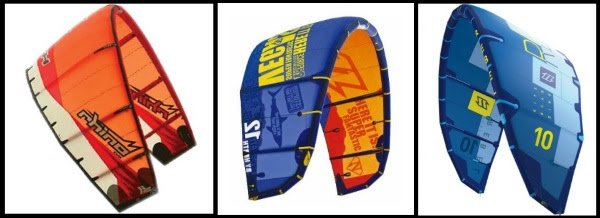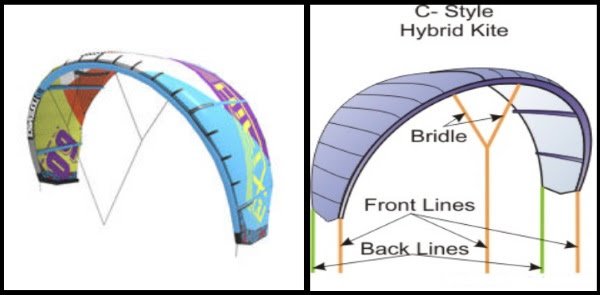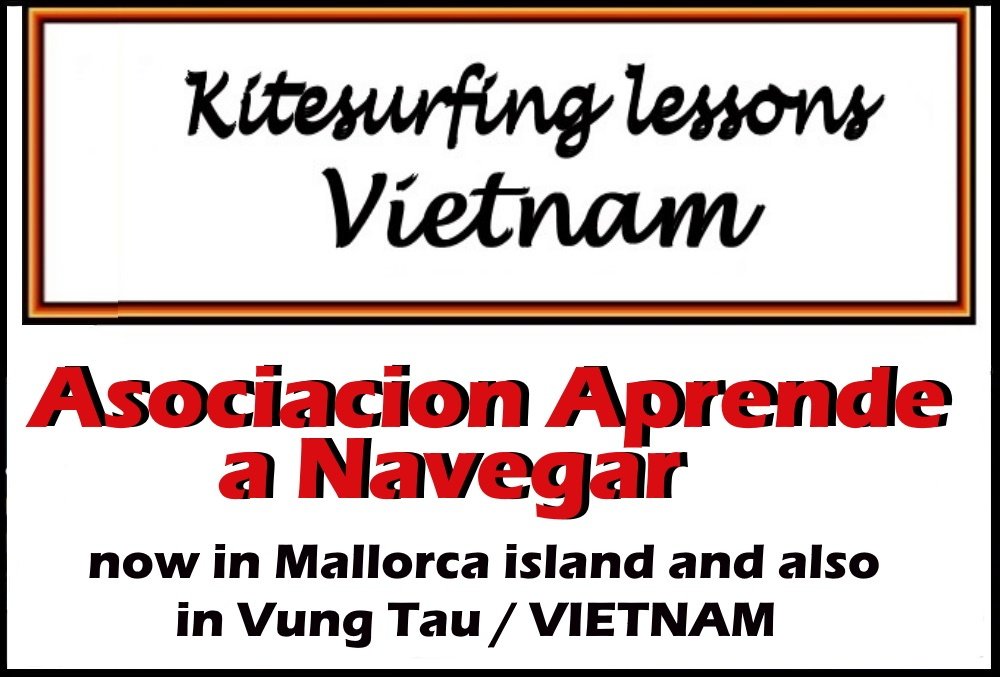How to relaunch a kite from the water
We will see in this new entry to the blog how to relaunch a kite from the water, for this we will also have a sequence of photos as well.

In theory, all tube kites are meant to be relaunched from the water, some more easily others, not so easily, but they should fly again once fallen into disgrace, from the sky into the water where will keep floating.
Obviously the blog entry talks mainly about the tube kites or inflatables. The relaunch of foil kites will be explained in another post.
Starting with the old type of C shaped kites to, to the list of different shaped kite models and until the ones you see nowadays, depending on their shape and design, as they have been changing their name. Not the brand or model that build them, I mean the name of the type of kite based on the design that has been provided.
The names of the last tube kites back some years ago was something like Delta flat, because they change their name every time, the point here, however, is that they all be able to fly again, with the proper technique and the amount of wind needed.
According to the design, so was the technique of relaunch
In those old type C kites, its relaunch was much harder, because the kite tips were not round but 90 degrees angle shaped, so when pulling one of the lateral lines, the resistance of the kite to turn on that point was such that there was almost no way to make the kite turn, that’s why the 5th line was invented.

Of these three kites in the photo above we have the North Rhino 4 model on the left. It is appreciated the squared tip angles which made difficult the relaunching.
This kite followed the model Rhino 5, which repeated the design basically of the previous Rhino 4 but with minimal variations and which was improved by the Vegas model, also from North.
This was Vegas in its third year since his birth in which the North brand managed to round off the tips of the leading edge.
That was a revolution because although the Vegas 2 went on sale just 2 months after the Rhino 5, it was a marvel when it came to relaunching the water, but not only that, because those rounded tips gave the kite three or four extra knots on the high range of wind, and that was priceless.
So many of us, kiters, opted for Vegas to the detriment of the Rhino, that could be considered a real revolution.
The Vegas Freestyle kite changed the market of kitesurfing while the Rhinos still were the kite for those riders that went for the big jumps, though being forced to lose this great high end that Vegas kites offered.
All this happened in April-May of the year 2006.
But going back to the past year, back in 2005, Cabrinha was the first brand to apply Mr. Legainoux’s experiments in a commercial way and that’s where the Bow kites came into the market.
Anyone who remembers the first bow kites, will have in mind the sharp ends of the kite, so that pulling the side line allowed a much easier turn, rising and flying again right in the mid of the wind window, in full power but thanks to the huge depower line without any problem and without having to let the kite move to the edge of the wind window as all the tube kites until then.

This model of kite was quickly followed by Naish’s SLE, since the revolution of the bows raised blisters on all brands which refused to accept the bows advantages, that is, they labeled us as cowards while “THE MEN”, the real ones, They where to be riding only with type C kites, that is, something like what windsurfers used to tell about kitesurfers.
Those two are the kites over these lines. Then came the Takoon and F one, the Slingshot Turbo and some other brands, while North had resisted for a year to get Vegas out of 2006 – for which it had to wait one year – with which, even with a very simple bridle, he joined the fleet of kites with sharp edges.
Later, the Naish brand started with its SLE design, then Cabrinha released their first hybrid, and there also in 2007, Fluid’s Ultraflat, of which I was a follower until its extinction.
After F-one with his Bandit 1 went to the Delta type and from there, and with Naish and his bat-type kite, the GK with its opposite design to the bat, nose type.

The one in the photo, the unmatched Fluid Ultraflat
Other brands later, returned to the C shape type but already with different and more effective bridle design, so the arrival of the Delta Flat.
By then I already started to lost track of the continuous achievements in the new designs of the tube kite industry because I had already switched to the kitefoil market, progressively since 2009.

Relaunch your kite from the water
But let’s go back to the relaunch. I would make two groups, in which, on the first group, by pulling the bar towards yourself, you had to grab a sideline from the farthest and pull continuously until it turned on its tip, there you turned the bar to the new position of the kite, the one in which the kite fly then you let the bar go upwards. And the second type, in which it is not necessary to pull the bar and just by pulling one of the side lines, the kite was already turning.

But still, in those two groups, there were two variants, the kite type in which the kite were relaunched in the mid of the power zone and, the kite, like the Deltas and some C with bridles, in which the kite has to be travel to 90 degrees on the wind window, so that the kite would fly out.

Even so, this had its trick, in all cases, because basically, the kite had to go to power to fill with enough air pressure and then start the process of relaunching whatever the case in particular.

Anyway, if the kite was not re-launched, the most times that was because there was not enough wind, in this case the solution was to move towards the kite quickly as much as the situation would allow.

Logically, it is not the same to do foot on the sea bottom than to have to swim towards the kite until the kite fell on its back, so when pulling the lateral line, it will travel to the 90 degrees and get to fly
The photos give an idea of how goes that process

If the lines were without tension, the kite could turn twice, with what the lines would cross and although it was still possible to relaunch and even control it yet, that was not what was intended, so it’s better not to move too much.
Since 2009 we opted for the Flysurfer kite foils, so the relaunching problems are over, but however, for what it is worth, a tube kite it is definitely a good option to cover yourself from the sun rays, especially when you have a couple of girl friends like the ones in the photo.

Do you want to learn Kitesurf in Vietnam?
Book your course at the best price
To contact the school click here

